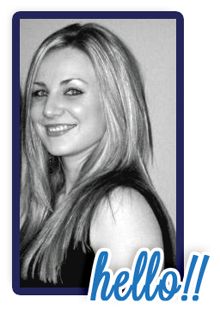Observation can be a powerful tool for expanding your understanding of
mindful communication and taking note of which communication strategies seem to
work well and which ones do not. For this Blog Assignment, observe an adult and
young child communicating and reflect on how the ways in which the adult
engages in interactions demonstrates the kinds of effective communication you have been learning about this week.
Select a location for your observation. The possibilities are plentiful
in everyday venues like a park, beach, community center, store, or on public
transportation. A preschool or other early childhood setting also can provide
an opportunity for you to see adults interacting and conversing with children.
This week I went to a children’s
clothing store with a girlfriend and it was a wonderful opportunity to watch
adults and children communicating with one another. During this observation I
noticed several very different forms of interaction. Children having fits and
parents tugging at them to leave the store, attentive adults asking their child
their opinion on clothing choices, children playing and running around the
store unsupervised and a father playing hide and go seek with his son while the
mother did some shopping. The children in the store ranged from newborns to
young children roughly six to seven.
I think
that it is important to note that it is impossible to gauge the way in which
children and adults regularly communicate based on one quick observation. With
that said, I really admired the way in which one mother asked her son his
opinion on the clothing she was purchasing. They were deciding between two monster
sweatshirts one orange and one blue depicting different monsters complete with
a hood. The mother could have easily just bought the one she preferred but
instead she valued his opinion, asked him questions and gave him some voice to
form his own identity.
.jpg) Kolbeck explains that her first job as an educator is to
teach the children to communicate with each other. One of the ways she can
support this learning is by truly listening to the students (Laureate
Education, 2011). I think that the mother in the above referenced example did
just that. She asked her son questions about his preferences and really
listened to his reasoning. I think that adults underestimate children and their
ability to know what they want and justify their reasoning. If this ability to
effectively communicate is taught early on it is a skill that can last them a
life time. I think that the parents or adults who were not involving the
children exhibiting examples of children misbehaving. “Listening to children seems
so simple. But when you’re fetching water to clean up the paint area, wondering
where the CD has disappeared to, and waving to a mother coming in the door,
trying to listen to a child following behind you can become challenging” (Stephenson,
2009). I think that the example Stephenson gives with regards to educators can
easily work in reference to parents and the way in which their busy lives and
the everyday hustle and bustle can often hinder a parent’s ability to take the
time to truly listen to their children.
Kolbeck explains that her first job as an educator is to
teach the children to communicate with each other. One of the ways she can
support this learning is by truly listening to the students (Laureate
Education, 2011). I think that the mother in the above referenced example did
just that. She asked her son questions about his preferences and really
listened to his reasoning. I think that adults underestimate children and their
ability to know what they want and justify their reasoning. If this ability to
effectively communicate is taught early on it is a skill that can last them a
life time. I think that the parents or adults who were not involving the
children exhibiting examples of children misbehaving. “Listening to children seems
so simple. But when you’re fetching water to clean up the paint area, wondering
where the CD has disappeared to, and waving to a mother coming in the door,
trying to listen to a child following behind you can become challenging” (Stephenson,
2009). I think that the example Stephenson gives with regards to educators can
easily work in reference to parents and the way in which their busy lives and
the everyday hustle and bustle can often hinder a parent’s ability to take the
time to truly listen to their children.
.jpg) Kolbeck explains that her first job as an educator is to
teach the children to communicate with each other. One of the ways she can
support this learning is by truly listening to the students (Laureate
Education, 2011). I think that the mother in the above referenced example did
just that. She asked her son questions about his preferences and really
listened to his reasoning. I think that adults underestimate children and their
ability to know what they want and justify their reasoning. If this ability to
effectively communicate is taught early on it is a skill that can last them a
life time. I think that the parents or adults who were not involving the
children exhibiting examples of children misbehaving. “Listening to children seems
so simple. But when you’re fetching water to clean up the paint area, wondering
where the CD has disappeared to, and waving to a mother coming in the door,
trying to listen to a child following behind you can become challenging” (Stephenson,
2009). I think that the example Stephenson gives with regards to educators can
easily work in reference to parents and the way in which their busy lives and
the everyday hustle and bustle can often hinder a parent’s ability to take the
time to truly listen to their children.
Kolbeck explains that her first job as an educator is to
teach the children to communicate with each other. One of the ways she can
support this learning is by truly listening to the students (Laureate
Education, 2011). I think that the mother in the above referenced example did
just that. She asked her son questions about his preferences and really
listened to his reasoning. I think that adults underestimate children and their
ability to know what they want and justify their reasoning. If this ability to
effectively communicate is taught early on it is a skill that can last them a
life time. I think that the parents or adults who were not involving the
children exhibiting examples of children misbehaving. “Listening to children seems
so simple. But when you’re fetching water to clean up the paint area, wondering
where the CD has disappeared to, and waving to a mother coming in the door,
trying to listen to a child following behind you can become challenging” (Stephenson,
2009). I think that the example Stephenson gives with regards to educators can
easily work in reference to parents and the way in which their busy lives and
the everyday hustle and bustle can often hinder a parent’s ability to take the
time to truly listen to their children.  I believe that when a child feels
like they are truly heard, they feel valued and important as does any human being.
I think that what I learned most from this task and from the way in which I
communicate with children is the importance of ensuring that, even when busy,
to take the time to truly listen to my students so that they know that they are
appreciated and that their ideas and opinions matter.
I believe that when a child feels
like they are truly heard, they feel valued and important as does any human being.
I think that what I learned most from this task and from the way in which I
communicate with children is the importance of ensuring that, even when busy,
to take the time to truly listen to my students so that they know that they are
appreciated and that their ideas and opinions matter.
References:
Laureate Education, Inc. (2011). Strategies for working with
diverse children: Communicating with young children. Baltimore, MD: Author
Stephenson, A. (2009). Conversations with a 2-year-old. YC:
Young Children, 64(2), 90-95. Retrieved from the Walden Library using the
Education Research Complete database.
http://ezp.waldenulibrary.org/login?url=http://search.ebscohost.com/login.aspx?direct=true&db=ehh&AN=37131016&site=ehost-live&scope=site

.jpg)
.jpg)






.jpg)




